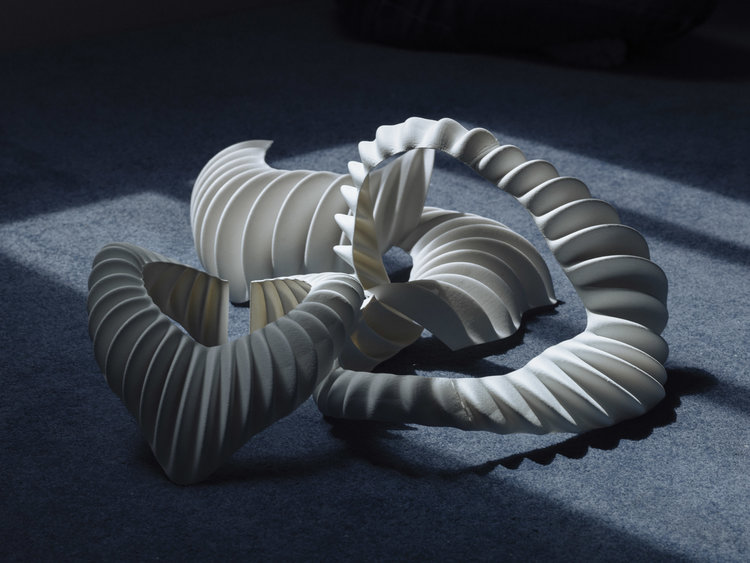In Jun Kamei’s latest project, materials science and and cutting edge design combine in a fully 3D printed mask that could help humans breathe underwater.
Titled Amphibio, the 3D printed gills were created to serve as a chilling premonition of the effects of Global Warming and the Earth’s rising sea levels. In an exclusive interview for 3D Printing Industry, I speak to Kamei to learn more about his latest concept and how design can have a positive impact on the environment.

Adapt and survive
Kamei is a researcher, designer and materials scientist for the the MicroLab team, a joint intiative between the Tokyo University Institute of Industrial Science and London’s Royal College of Art (RCA). Inspired by nature, Kamei’s work frequently veers into the realm of biomimicry.
In the creation of Amphibio, Kamei explains, “I was particularly interested in water diving insects which can survive underwater by virtue of a gill.”
In addition, Kamei was stirred by estimates that the Earth’s temperature would rise by up to 3.2℃ by the the year 2100. If so, the Amphibio bio asserts that the temperature rise would result in a sea level rise “affecting more that 30% of the global population and submerging the megacities situated in the coastal areas.”
Considering these predictions, Kamei sought a way for how humans could adapt to survive.
3D printed gills
Amphibio gills are made from three, multimaterial 3D printed rings worn like a bib around a person’s neck. Kamei says “the material is a combination of hydrophobic material, elastomeric material” and “a few other things” that cannot be disclosed due a patent pending for the formulation.
The flexible, and water resistant rings are 3D printed with multiple compartments that appear as ridges on the surface. In a proof on concept experiment, Kamei demonstrated how gills can be used expel carbon dioxide and take in oxygen from the surround water.

How do they work?
Kamei’s 3D printed gill is suspended by two connecting tubes in the center of a tank filled with water. Through the left tube, Kamei fills the gill with 70% CO2 gas, mimicking the level of CO2 concentration when a person exhales. Attached to the second tube, there is a sensor that monitors the oxygen level inside the gill at all times.
From here, Kamei explains, “The system is enclosed with air tight one way valve, thus the only way oxygen could be replenished in the gill is through the membrane from the surrounding water,”
“The surrounding water has oxygen dissolved into it, and because the percentage of oxygen is low inside of the gill, these oxygen molecules in the water travel through the membrane inside of the gill to compensate the concentration difference,” like the process of osmosis.
“A similar thing happens for the excess CO2 molecules, which in contrary travel from inside of the gill to the surrounding water.”
In the video below you can observe how the oxygen level rises inside the mask on a screen that reads from the attached oxygen sensor.
“This is the mechanism of how the gill can replenish oxygen and get rid of the CO2,” Kamei adds.
The return to Atlantis
At present, the Amphibio gills are not suitable to replace your typical scuba gear, but Kamei did give some helpful pointers for how the device might read the next stage.
Firstly, “enough surface area [of the gills] needs to be secured around the body.”
“Secondly, a safety measure needs to be in place which monitors the oxygen level and could switch to a smaller emergency gas tank in case the gill does not provide enough oxygen.”
And finally, it would need to be tested in “a controlled aquarium with human oxygen consumption simulation.”
Other 3D printing projects seeking to help us adapt to our changing environment include the pollution absorbing bikini from the University of California Riverside and Dani Clode‘s third thumb.
Exclusive interviews and news can be found by subscribing to the 3D Printing Industry newsletter, following us on Facebook and liking us on Twitter.
For 3D Printing Jobs, sign up here.
Featured image shows Amphibio 3D printed gills. Design by Jun Kamei / Photography by Mikito Tateisi / Model Jessica Wang



